Having the right plants, trees, and shrubbery can enhance the beauty of your landscaping. For this to work, being consistent on mowing, watering, and fertilizing is a must. Doing these can help you achieve a healthy lawn.
However, even the best landscaping are susceptible to certain dangers, like pests. While healthy landscapes are teeming with insect life, certain kinds can be terrible for your lawn. Here are common pests that can damage your yard:
1.Chinch Bugs
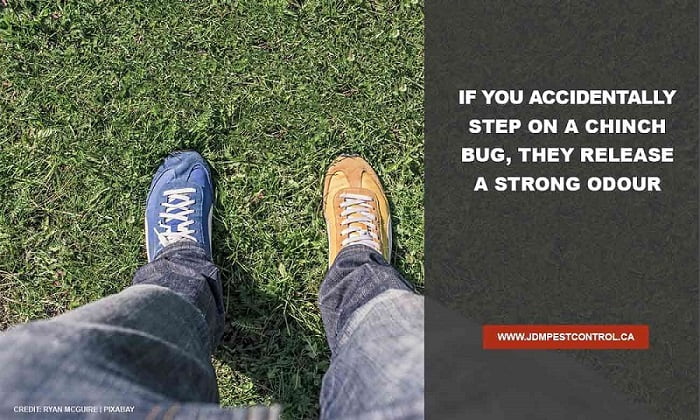
What Are They?
Blissus leucopterus, also known as chinch bugs, are approximately 4 millimetres long when their bodies fully develop. When they’re still young nymphs, they are usually bright red, with a white band on their abdomen.
As they develop into adults, their wings cover the band, which in turn, will turn black. Meanwhile, the adult’s bodies differ in hues. They can be dark red to brown, with white wings and red legs. Both nymphs and adult chinch bugs release a strong scent that often gives them away, like when they get crushed underfoot.
How Do They Cause Damage?
Chinch bugs feed on both cultivated and wild plants that belong to the grass family. These harmful insects tend to gather on sunny open patches of turfgrass. It can be hard to spot them due to their size.
A chinch bug can do so by puncturing the grass with their needle-like beaks. They suck out the fluids, and your lawn starts to turn yellow and brown as they die. You’ll begin to see patches on the edges of your landscape, and it will continue to get bigger. Once they’re dry, they transfer to other growing plants.
2.Cutworms
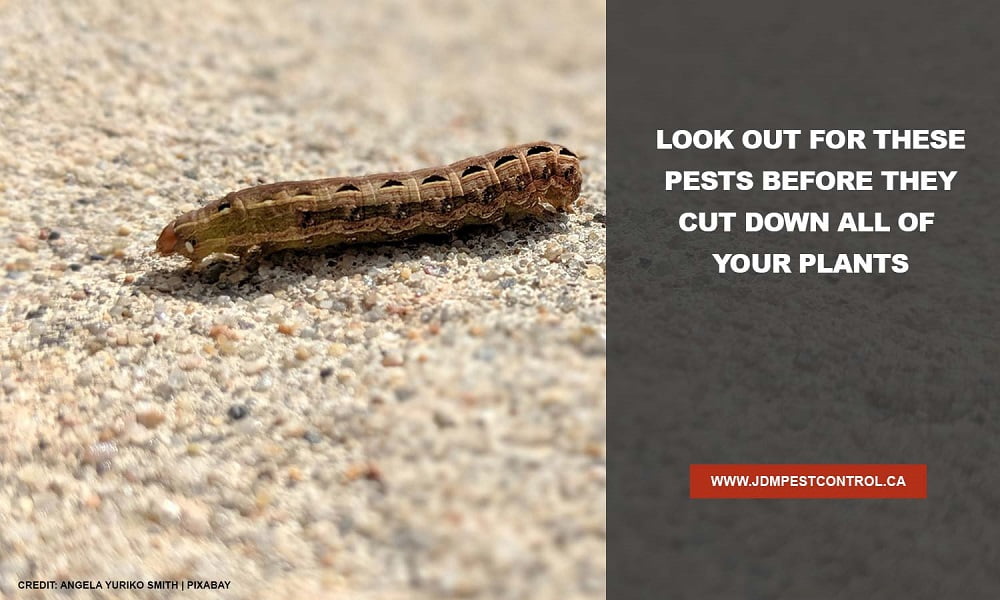
What Are They?
Cutworms are another common pest that can damage your plants. They’re typically brown, green, grey, or yellow soft-bodied caterpillars. They often have longitudinal stripes and measure 1 to 2 inches in length. As larvae, they feed during the night and burrow into the soil when it is daytime.
When these bugs develop into adults, they become brown or dark gray night-flying moths. They have wings with blotches or stripes on them. Interestingly, they no longer harm plants once they become moths.
How Do They Cause Damage?
Cutworms get their name from their habit of cutting down the first part of a plant that it sees, which usually is the stem of a seedling. At night, these pests cut off seedling stems and young plants that are nearby or just below the surface of the soil.
They also climb plants and wreak havoc on buds, foliage, and shoots. They frequently attack turfgrass by cutting off the leaf blades at the crown. However, their feeding behaviour can differ; some will stay with the plant they cut and continue to feed on it. Meanwhile, others will eat only a small part of the plant and immediately move on to the next.
3.Earwigs
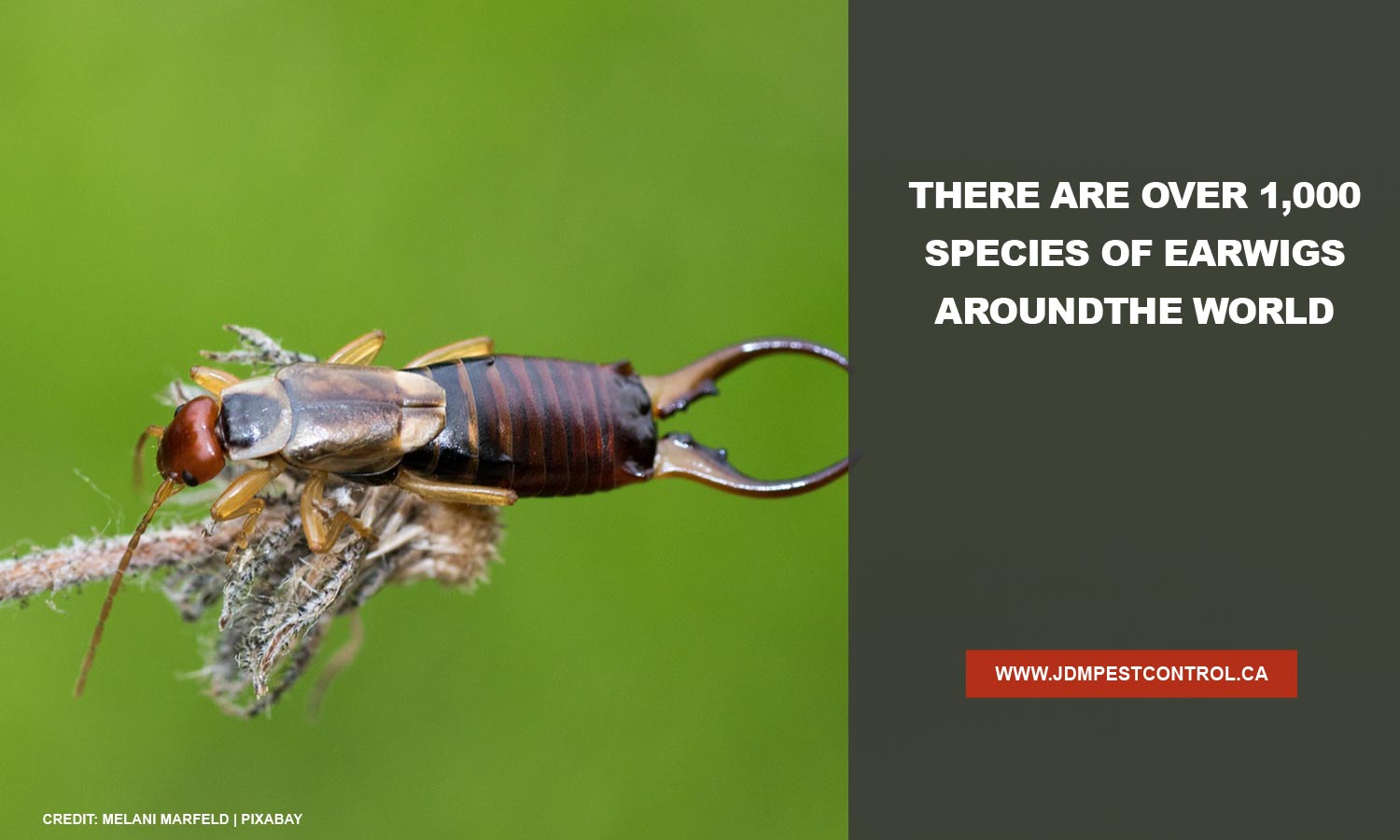
What Are They?
Forficula auricularia, or earwigs, have elongated and flattened bodies that measure up to 1 inch in length. Their colours vary from pale brown to reddish-brown to black. They have 6 legs and a threadlike antenna. Earwigs also have a pair of sharp pincers at the tail end for mating and capturing prey.
Their name comes from an old superstition that they crawl into your ears as you sleep and bore into your brain. While they may look dangerous, they’re harmless to humans.
How Do They Cause Damage?
They may not harm humans, but they can hurt the plants in your yard. Primarily, they’re nocturnal feeders, and they consume decaying or dead animal matter.
Once their population is out of control, they will begin to feast on seedlings or young foliage of flowers and vegetables. They will bore holes into the leaves and make them appear jagged.
4.Leatherjackets
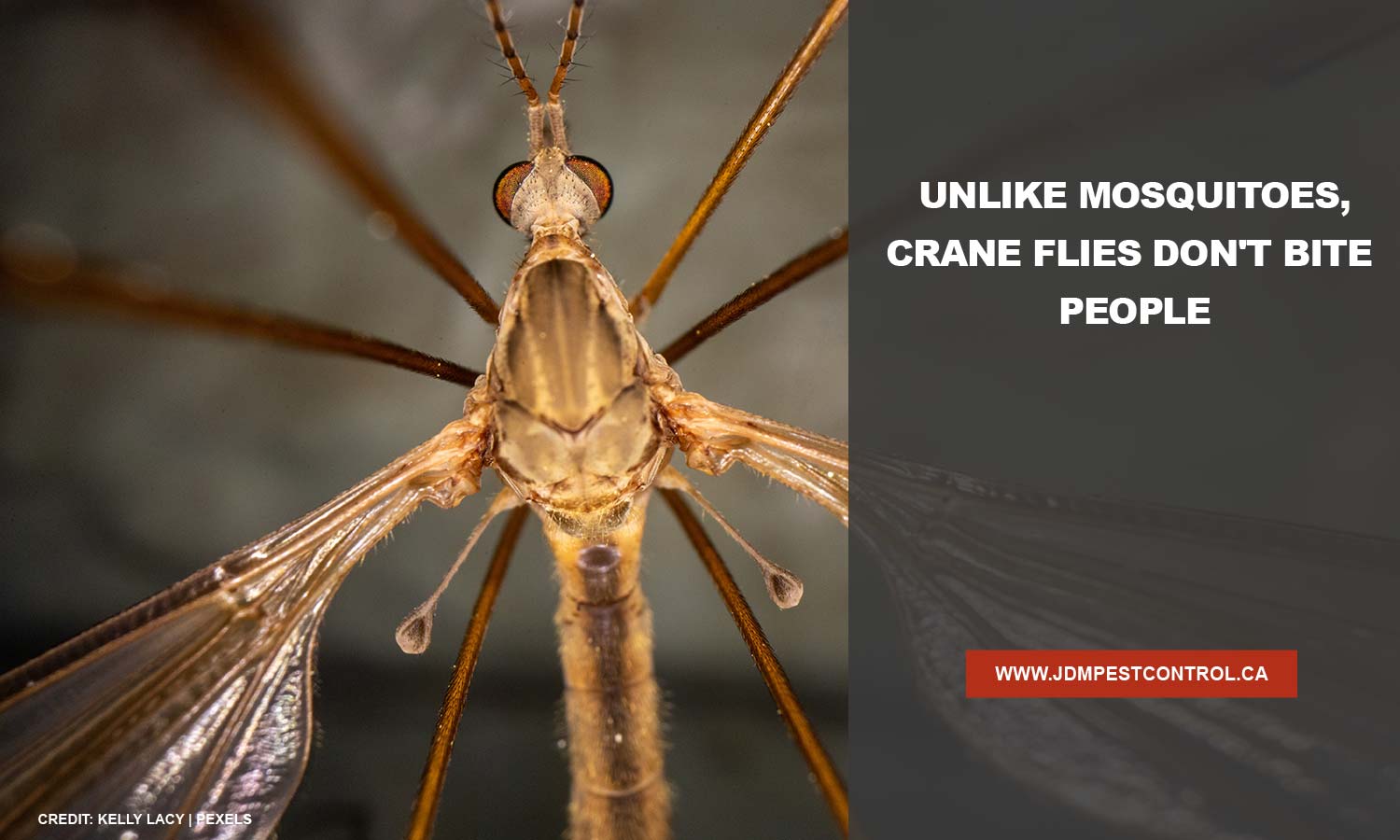
What Are They?
Leatherjackets are the larvae of the crane fly in the Tipulidae family. Their bodies can grow up to 1 inch, and they also have a greyish brown colour. Their abdomen may be smooth, lined with hairs, or have welt-like spots or projections.
As adults, leatherjackets turn into crane flies, which resemble large mosquitoes. These flies have long antennae and are often brown, gray, red, or yellow. Female crane flies have a stinger-like ovipositor at the end of their abdomen, which they use to deposit their eggs into the ground.
How Do They Cause Damage?
Leatherjackets prefer to eat the seedlings, small plants, and grass in your lawn. Your yard will look uneven because there are sections where they will completely consume everything until you can see the soil. It’ll also develop yellowish-brown dead patches.
While they don’t cause a substantial amount of damage, it’s still a good idea to get pest control for your landscape. Leatherjackets lay their eggs on the soil and can multiply quickly.
5.Sod Webworms
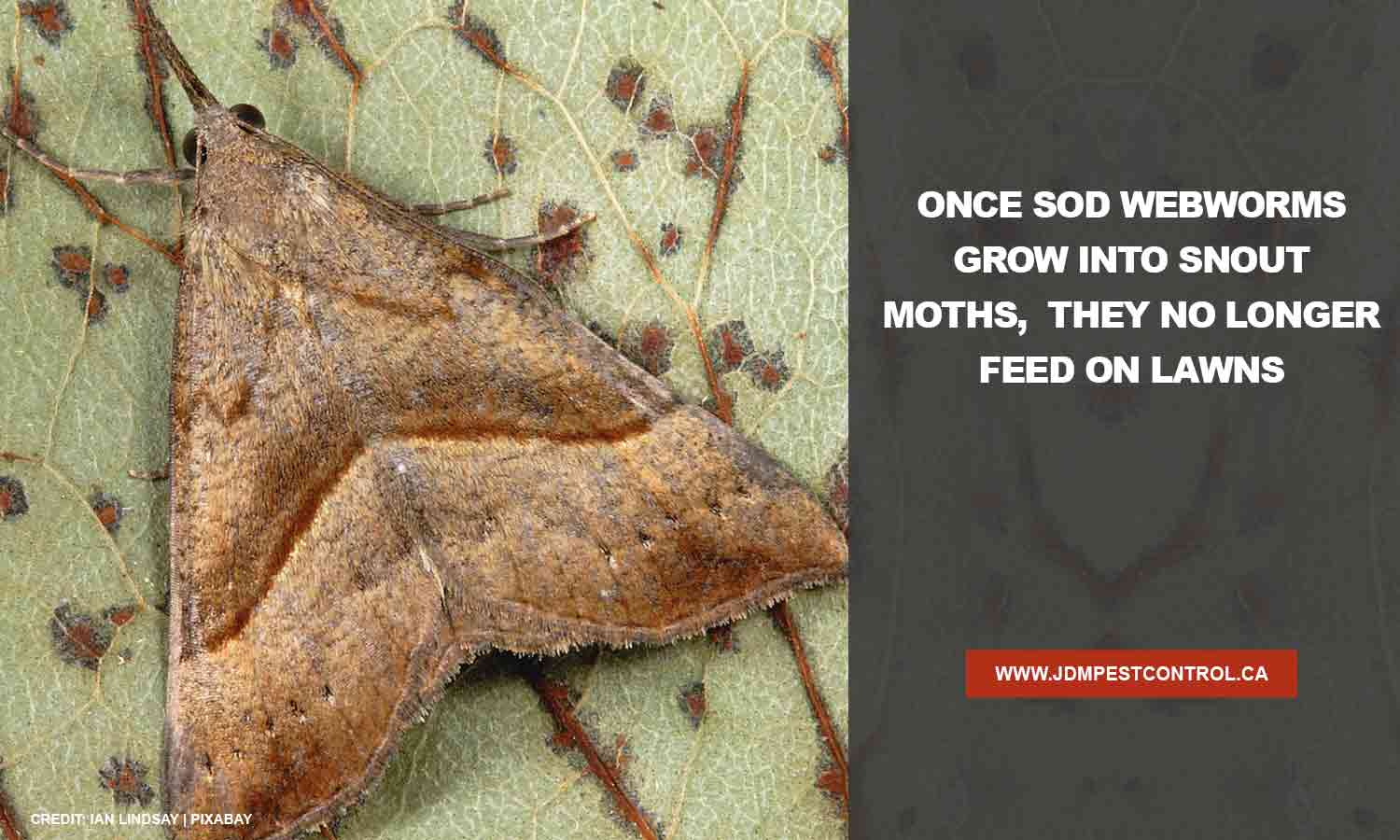
What Are They?
Sod webworms are the larvae of moths that belong to the genus Crambus. They get their name after the webs they create when they move, which pulls together grass, plant debris, and soil. They come in a variety of colours and will reach about an inch in length.
Adult sod webworms are called snout moths due to the two small extended points on their heads that look like a snout. They’re generally cream-coloured and measure up to 3/4 inches in length. When they’re resting, they fold their wings around their bodies, which gives them a cylindrical appearance.
How Do They Cause Damage?
Sod webworms will spin a light webbing and consume the undersides of the leaves. At first, the damage will appear as small, ragged brown spots in the turf. The more they feed, the patch will continue to grow. They will also take over most turfgrasses in areas where there’s plenty of direct sunlight.
Similar to crane flies, snout moths don’t feed on lawns. Although, as part of their life cycle, mated female moths fly above these areas and will randomly scatter their eggs into the grass. Without pest control, sod webworms can continue to thrive in your landscaping.
6.White Grubs
What Are They?
White grubs are the larvae of many types of insects, which include billbugs, European chafers, and June bugs. They’re white, C-shaped, and they usually have tiny heads and small legs. Most of them measure between 1/2 and 2 inches in length.
How Do They Cause Damage?
These insects live below the surface of the topsoil. Especially if the soil in your yard is moist, they will come up to feast on your plants. Depending on the number of grubs, they can either stunt your plants’ growth or even kill them.
You’ll also begin to see dead spots in your lawn where the grass will turn brown and die. More animals, such as birds and raccoons, will visit and dig up the areas where they can smell the grubs. They can further damage your yard.
In conclusion, it’s not unusual to find tiny critters living in your landscape. However, it’s always crucial to know which ones can harm your lawn. Through this, you can detect and address any landscaping issues before they become a huge problem.
If you’re looking for excellent pest control services, look no further than JDM Pest Control. Please feel free to contact us at (416)-729-3568. You can also email us at joe@jdmpestcontrol.ca.
